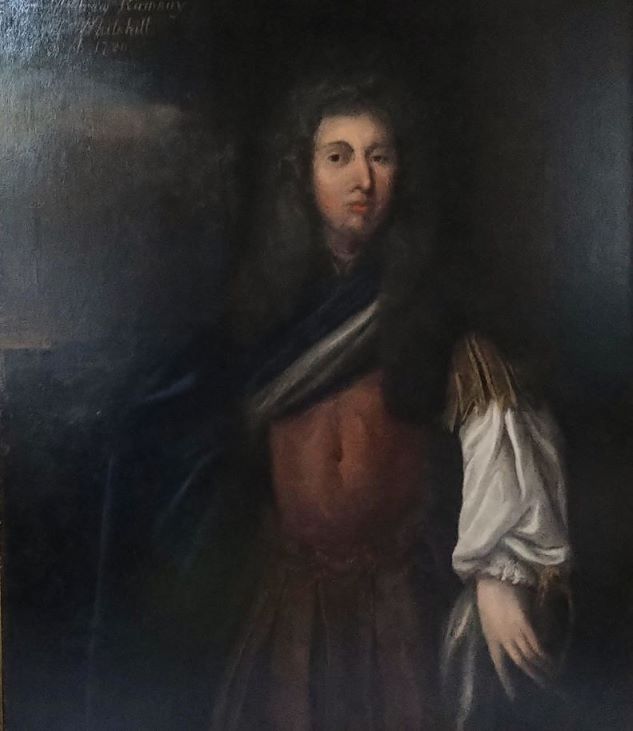Andrew Ramsay, Bart

“Sir Andrew Ramsay, Baronet [S. 1665], of Whitehall, next br. and h., 6. 26 June 1678 ; Advocate, 29 Jan. 1704 ; sometime Sheriff Depute of Edinburgh ; universal legatee of the will of his br., George Ramsay, pr. 10 Dec. 1701 ; site, to the Baronetcy, 5 Oct. 1717, and had service to his elder br., 13 March and 3 July 1718. He m. (contract 30 April 1716) Elizabeth, da. of Thomas Leirmonth, Advocate, with a, fortune of 16,000 merks. He d. 24 and was bur. 27 Dec. 1721, in the old churchyard of Carringtoun, aged 43. His widow d. 12 and was bur. there on the 16 Nov. 1763.”
SOURCE: Complete baronetage; Cokayne, George E. (George Edward); 1904; Vol. IV; page 243
As a younger son, Andrew was destined for the law. He joined the Faculty of Advocates and was appointed Sheriff Depute for Edinburgh (probably in 1710). He gained the baronetcy and became Sir Andrew Ramsay, 4rd baronet of Whitehill, after the death of his father Sir John Ramsay in 1715, and of his older brother John (the 3rd baronet) in 1718. His younger brother Charles died in 1714.
He married heiress Elizabeth Learmont in 1717, who bore 2 sons and 2 daughters. The surviving child, Anne, eventually inherited the Whitehill estate.
Andrew used his legal expertise to help resolve his father’s financial difficulties and so avoid bankruptcy. When he inherited the estate of Whitehill and Sherwenden, he sought to safeguard it by drawing up a Deed of Entail, dated 24-11-1721, to ensure that it would always be passed on without division. He died in December that year, and the Parks of Whitehill lands were soon tacked (rented out) by “publick voluntar Roup”, as advertised in the January 1722 Edinburgh Evening Courant. Alexander Pitcairn, Writer to the Signet, drew up the “Inventar of the Stocking” which would be interesting to find.

When his son John, the 5th baronet, died in 1744, the title lapsed, but the property was passed through a contract of excambion to his daughter Anne Ramsay and her husband Robert Balfour Ramsay of Balbirny.
John Balfour, their eldest son, was due to inherit Balbirny, so his younger son George Balfour took the name, title and designation of Ramsay of Whitehill.
The portrait shows Andrew, traditionally thought to be by Medina, wearing half armour, with a distant view of Edinburgh Castle, to mark his accession to the Baronetcy. Originally full length, it’s now in poor condition, having been moved from a wooden backing to canvas, and cut to match the other portraits that hung in the hall at Whitehill. This portrait is paired with his wife’s.
Elizabeth’s portrait shows her resplendent in court dress and can be seen on her page.